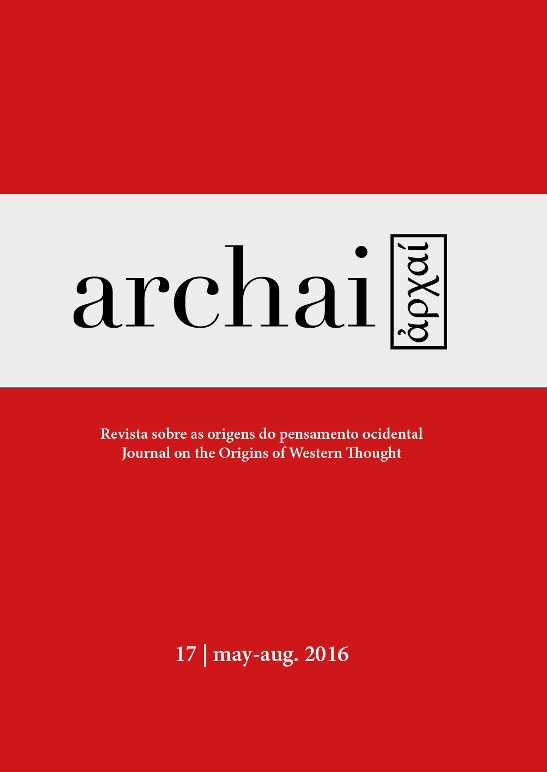Soul, death and immortality
DOI:
https://doi.org/10.14195/1984-249X_17_6Abstract
Plato’s dialogues are great theatrical performances. These representations put into the scene something that none of the Greek tragedians or comedians dared to treat before Plato: philosophy. Each dialogue is therefore a play that deals with a topic, or many topics of philosophy, which makes Plato responsible for “philosophy” first meaning and connotation. The Phaedo was, of course, interpreted in many different ways. In the Phaedo, we do find a set of ideas opposed to a pure and simple empiricism; we do find the theory of the immortality of the soul; we do find logical and argumentative inconsistencies. However, in order to make sense of all that, we must stop seeing Phaedo as treatise on philosophy. Thus, Phaedo must be read as a theatrical work that brings into play a unique situation ”“ the last day of Socrates’ life ”“ with unique characters discussing philosophy, or, in other words, what is philosophy for them. And they argue ”“ and this is really what Plato puts into play ”“ with all the complexity of feelings that they sometimes experience: pleasure and pain, tears, smiles and laughter, groans and commotion. In this last day, in Socrates’ cell, a synthesis of all these men’s lives is shown.
Downloads
Downloads
Published
How to Cite
Issue
Section
License
Given the public access policy of the journal, the use of the published texts is free, with the obligation of recognizing the original authorship and the first publication in this journal. The authors of the published contributions are entirely and exclusively responsible for their contents.
1. The authors authorize the publication of the article in this journal.
2. The authors guarantee that the contribution is original, and take full responsibility for its content in case of impugnation by third parties.
3. The authors guarantee that the contribution is not under evaluation in another journal.
4. The authors keep the copyright and convey to the journal the right of first publication, the work being licensed under a Creative Commons Attribution License-BY.
5. The authors are allowed and stimulated to publicize and distribute their work on-line after the publication in the journal.
6. The authors of the approved works authorize the journal to distribute their content, after publication, for reproduction in content indexes, virtual libraries and similars.
7. The editors reserve the right to make adjustments to the text and to adequate the article to the editorial rules of the journal.



